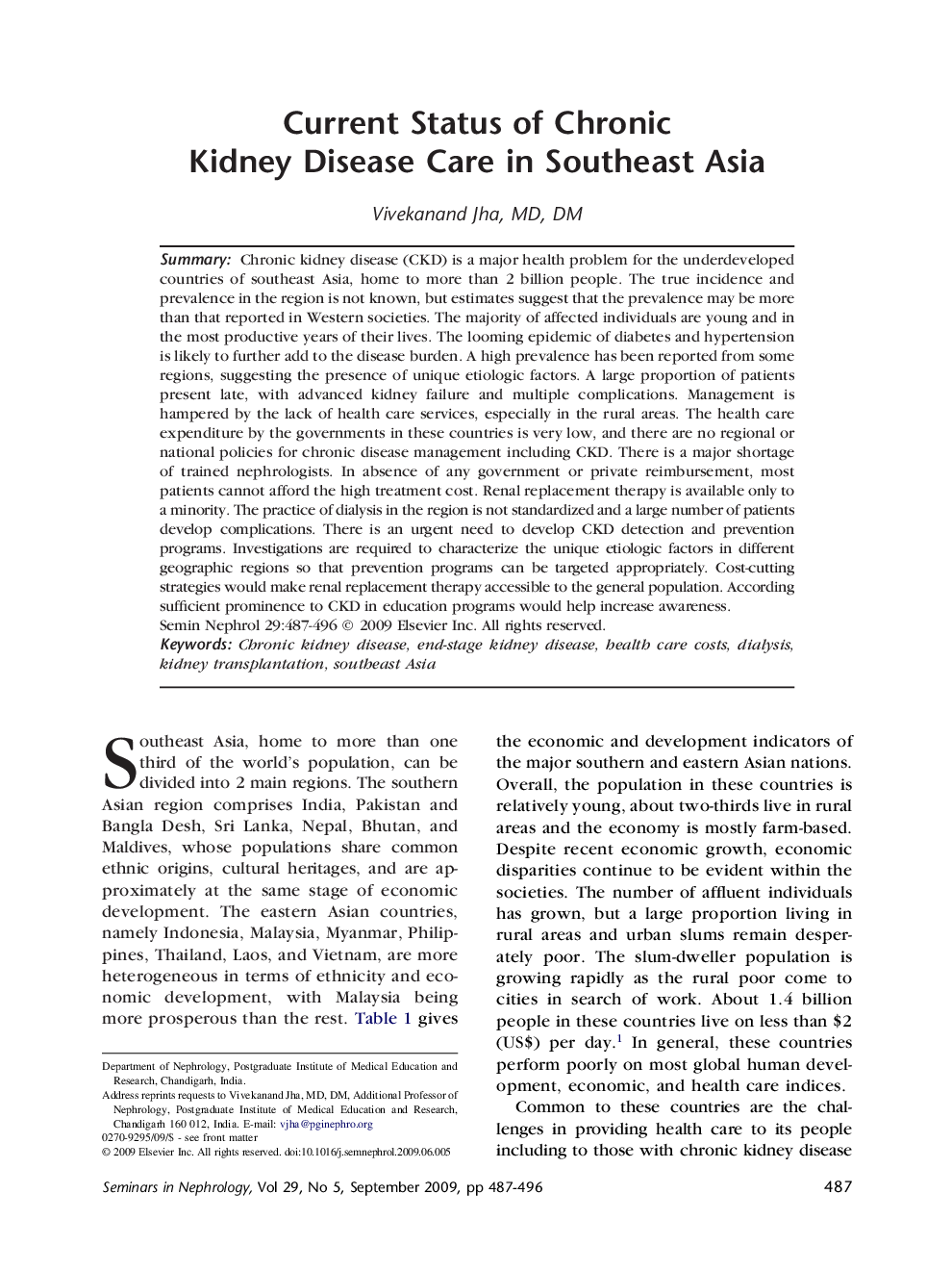| Article ID | Journal | Published Year | Pages | File Type |
|---|---|---|---|---|
| 3897557 | Seminars in Nephrology | 2009 | 10 Pages |
SummaryChronic kidney disease (CKD) is a major health problem for the underdeveloped countries of southeast Asia, home to more than 2 billion people. The true incidence and prevalence in the region is not known, but estimates suggest that the prevalence may be more than that reported in Western societies. The majority of affected individuals are young and in the most productive years of their lives. The looming epidemic of diabetes and hypertension is likely to further add to the disease burden. A high prevalence has been reported from some regions, suggesting the presence of unique etiologic factors. A large proportion of patients present late, with advanced kidney failure and multiple complications. Management is hampered by the lack of health care services, especially in the rural areas. The health care expenditure by the governments in these countries is very low, and there are no regional or national policies for chronic disease management including CKD. There is a major shortage of trained nephrologists. In absence of any government or private reimbursement, most patients cannot afford the high treatment cost. Renal replacement therapy is available only to a minority. The practice of dialysis in the region is not standardized and a large number of patients develop complications. There is an urgent need to develop CKD detection and prevention programs. Investigations are required to characterize the unique etiologic factors in different geographic regions so that prevention programs can be targeted appropriately. Cost-cutting strategies would make renal replacement therapy accessible to the general population. According sufficient prominence to CKD in education programs would help increase awareness.
